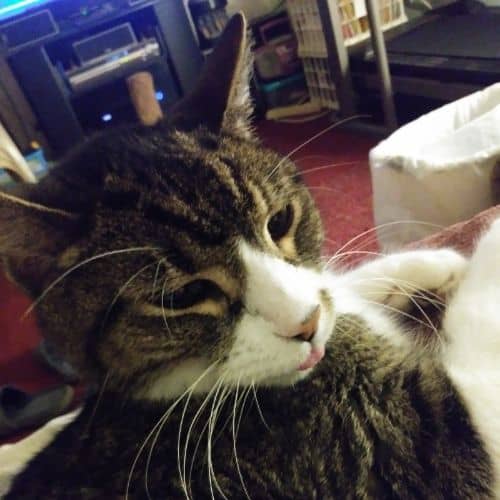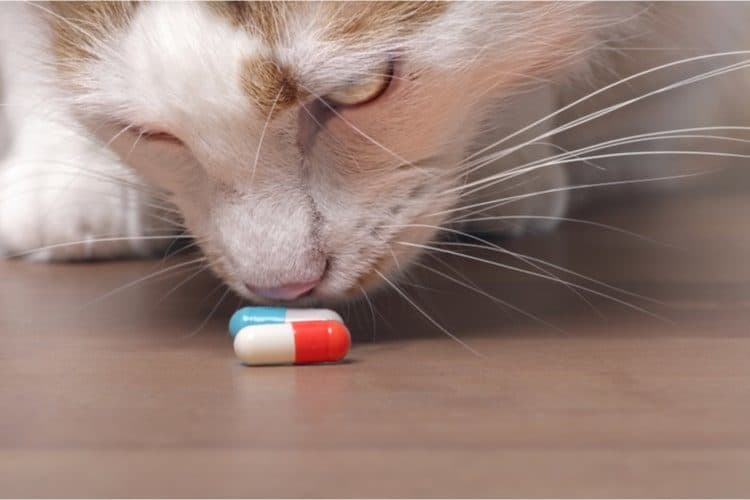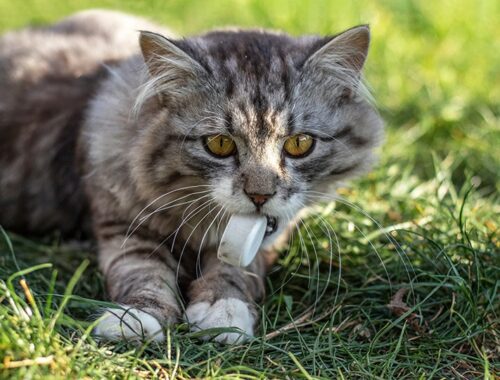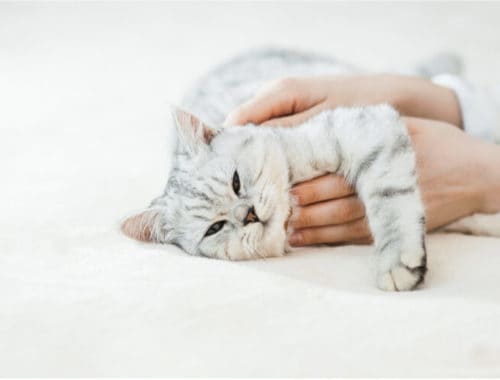Question: My hyperthyroid cat won’t take his medicine, which is in pill form. Can you tell me how to give a cat a pill?
My 15-year-old cat has hyperthyroid, and he’s supposed to take medicine. I’m having major issues giving him the pill. I tried to crush it in food, and now he won’t even eat that food without the pill in it. I’ve tried putting it in his mouth and holding his mouth shut, but I’m finding pills around the house. I’ve tried real fish, chicken, and beef, but if I put the pill in it, he won’t eat it. Help, I’m at a loss.
-Ann

Answer:
Dear Ann,
I am so sorry that you and your kitty are having to go through this. Giving a cat a pill is one of the most challenging tasks that we ask owners to do. Some cats are amazing at taking pills, and others are an absolute nightmare. While every cat is a little different, I do have a few tricks up my sleeve that you might be able to try for your kitty. Also, I will discuss a few hyperthyroid treatment alternatives that you can discuss with your veterinarian to see if it would be an option for your cat.
How To Give a Cat a Pill: 3 Tricks
1. Hide the Pill in a Pill Pocket
Trying to hide the pill in a pill pocket would be my first suggestion. Pill pockets are soft treats designed to form around the pill. I usually break off a small piece of the pill pocket and hide the pill in it. One of my own cats that I medicate consistently takes his medication this way. Another one of my cats can find the pill in the pill pocket and will spit it out. One trick I have learned is to take a small piece of the pill pocket and hide the pill in it then push the pill pocket/medication onto a piece of dry kibble that I then place in his bowl with his other food. I can often trick him into taking his pill this way.
2. Try a Pill Gun
Some people have luck using a pill gun to administer their cat’s medications. I have had varying levels of success using a pill gun. This might be one option for your cat because it may allow you to shoot the pill back farther into the mouth when administering the pill so your cat has a lower chance of spitting the pill out later.
3. Blow on the Nose or Massage the Throat
If your cat seems to be spitting out the pill after trying to administer the medication orally, he may not be swallowing it after you are giving it. Check out this YouTube video for suggestions on how to pill a cat. After you place the pill in the back of the throat, gently hold your kitty’s mouth shut and massage his throat with your hand or blow gently on the nose. You could also try following the pill with a small syringe of water. This will help to encourage him to swallow the pill.
What To Do If You Are Still Having Trouble Giving Your Cat a Pill
1. Switch To a Liquid Version of the Medication
Because some cats are so challenging to pill, many medications can now be compounded into a flavored liquid. If you are having too much trouble giving the pill or if it is affecting your relationship with your cat, you might ask your veterinarian if you can switch to the liquid version of the medication. While it may be a little more expensive, it may save you a lot of headaches!
2. Switch To a Transdermal Version of the Medication
Some medications can be given transdermally or through the skin. Methimazole, the medication to treat hyperthyroidism in cats, can be given in this way. With this form of medication, you will wear gloves and apply the medication to the ear flaps. It will then absorb through the skin. While it may not be as effective as the pill version of the medication, you will likely be able to be more consistent with it since it is easier to use.
Final Thoughts
Giving a cat a pill can be extremely challenging. By using some of the tricks described above, you may have some luck in giving the pills. If that is not working, I recommend speaking with your veterinarian about alternative treatments to pills. Some cats simply will not tolerate being medicated! Good luck with your sweet kitty!
Sincerely,
Addie Reinhard, DVM
Disclaimer: Your use of the Ask The Vet feature is subject to the Ask The Vet Terms of Use. Content is for informational and educational use only and should not replace professional veterinary advice.
Featured Image Credit: Lightspruch, Shutterstock
































